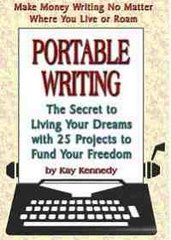WRITE TO BE UNDERSTOOD
Good writing can be as eloquent as you are capable of making it or as technical as you need. However, if you plan to write for the general public, you need to write simply. Instead of large words and long paragraphs, everything will need to be written in as few words as possible, with short sentences broken down into brief paragraphs.
In the first place, the average reading grade level of the person who will read your consumer magazine piece is at the seventh or eighth grade. Shocking, isn’t it? It’s not that your average reader is dumb. It’s simply that most people reading an article or book won’t stick with it unless sentences are short and to the point and the words are easy to understand. In other words, the average reader is somewhat lazy!
Don’t get in the habit of writing sentences that contain 30 words or more, especially if they can be easily broken down into two or three short sentences. Don’t use ten-dollar words when a ten-cent word will do. If you ever watched the TV show, Frazier, then you know how pretentious his and his brother Niles’ word choices and sentences were. That’s what readers will think if you use rambling sentences and unfamiliar words: pretentious and boring!
If you’re unsure about a more familiar word to use, check a thesaurus. No, this is not cheating. If you don’t use one, you’re cheating readers. When I worked for a publishing house, the first thing they handed me was a thesaurus.
If you’re unfamiliar with any of the suggested words, look them up in a dictionary.
Now that I’ve said all this, if you know that the reading level of your typical reader is college level, then you probably want to use some compound sentences and more educated words. When I first started writing I had a program on my computer that would tell me the grade level of the article I had just written I checked every article for a couple of years to make sure I wasn’t talking above or below my targeted readers’ skill level. Since I wrote for consumer publications and for professional business owners with graduate degrees, I found it very helpful. I wish I knew what the software was and if it is still available.
For professional clients or readers, you should write at the eleventh or twelfth grade level, but for the general public, seventh to eighth grade is best. Read the publication you want to write for and study sentence construction and word use. I’ve been told that Reader’s Digest articles are written at the seventh to eighth grade reading level, so it is a good publication to study. When writing for professionals, get a copy of a trade magazine for their profession and study the words and sentence structure used so you’ll have an idea of the level at which you need to write.
Being a professional writer means knowing how to write simply when needed, or how to up the level for higher educated readers.
One quandary for new writers is making their article fit the word count an editor has given them. It’s way too easy to come up short or to go way over the specified length. In the next issue I’ll write about how to cut words from your article to meet a publisher’s word count guidelines.
Tuesday, October 31, 2006
Subscribe to:
Post Comments (Atom)


No comments:
Post a Comment